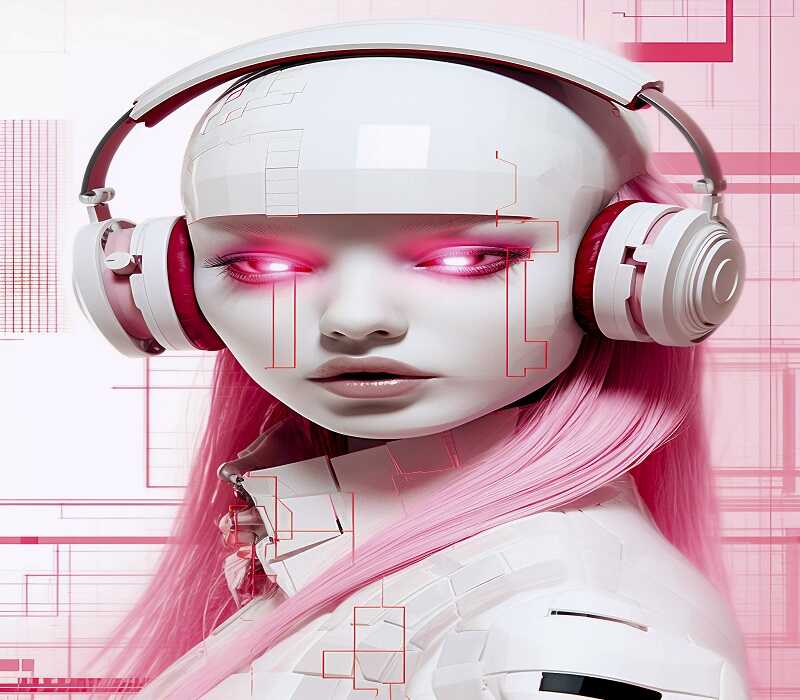
Few advancements in the rapidly changing field of technology have had as significant an influence on our self-expression as the emergence of digital identities and AI avatars. Self-expression is no longer limited to the real world for Gen Z, the generation that grew up with the internet at their fingertips. An entirely new canvas to examine their identities, self-presentations, and interpersonal interactions is provided by digital platforms and virtual spaces. There are significant ramifications for social interactions, businesses, branding, and the future of self-expression in general due to this change in how we define our identities.
Let’s examine in more detail how Gen Z is interacting with the world through digital identities and AI avatars, and how this new form of expression is impacting everything from social media to business to logo design.
How Digital Identity Has Changed
Creating a social media profile is only one aspect of Gen Z’s digital identity; another is developing a comprehensive persona that is consistent across various platforms. These digital representations, which range from online gaming avatars to TikTok videos and Instagram stories, frequently function as an extension of the self. They can be as artistic, as exaggerated, or as refined as the artist desires. Nowadays, it’s more important to create an online persona that feels authentic to who you are—or who you wish to be—than it is to merely look like your real self.
What is causing this change? It is a result of a number of factors, including the availability of strong digital tools, a shift in culture toward more candid self-expression, and the growing significance of online communities. Gen Z grew up in a time when socializing isn’t the only thing that happens in virtual spaces; many people use them to connect with people all over the world, find their tribes, and create their identities. This digital-first generation is skilled at interacting with others online, experimenting with various facets of their identities, and utilizing technology to communicate and express themselves in previously unattainable ways.
The Emergence of AI Avatars in the Digital Environment of Generation Z
One of the most intriguing innovations in this field is the creation of AI avatars. These digital representations are more than just your average profile picture or game avatar; they are realistic, adaptable, and frequently driven by cutting-edge artificial intelligence technology. Gen Z can make avatars that look and act exactly like them, or as a completely different version of themselves, with the aid of tools like AI image generators. These avatars are a crucial component of how many young people present themselves online since they can be utilized in virtual reality settings, social media platforms, and even online meetings.
Consider apps like Zepeto or even the augmented reality filters on Instagram. Users can create customized avatars with these apps that either completely change their appearance or mimic their real-life appearance. Some even go so far as to let users alter their appearance, try out different hairstyles, and manipulate their facial features. Gen Z can experiment with different incarnations of themselves through AI avatars, whether it’s trying on a new look or just losing themselves in a world where they feel more at ease being who they really are.
However, what does this signify for conventional ways of expressing oneself? Many people believe that AI avatars will be the way they present themselves to the outside world in the future. Similar to editing a photo or creating a brand’s logo, they allow people to manipulate and improve how they appear by obfuscating the distinction between the digital and physical worlds. The distinction is that AI avatars are dynamic, capable of real-time evolution, change, and adaptation, providing a previously unheard-of degree of personal freedom and flexibility.
Digital Branding and Identity: A New Era for Companies
Not just people are impacted as this wave of digital expression gains traction. Companies are using AI avatars and digital identities more and more to improve their branding and customer service. Brands can now use AI avatars, for instance, to act as brand ambassadors by interacting with consumers virtually or making tailored recommendations on websites.
AI avatars also create new marketing and branding opportunities. Digital avatars are becoming an essential part of how companies interact with their clients, much like a company’s logo design can help create a memorable and recognizable image. A lot of businesses are already using virtual influencers, which are AI-powered characters that communicate with followers on social media, to market their goods or produce interesting content.
Similar to a logo, these avatars can be extensively altered to reflect the ideals, tone, and style of a company. For instance, a fashion brand might design a high-fashion avatar to highlight the newest trends, while a fitness brand might design a warm, inspirational avatar that inspires clients to push their boundaries. AI tools and digital avatars are thus giving companies a completely new way to engage with their audience, increasing engagement and fostering a sense of community.
The Moral Aspects of Identity and Digital Avatars
The potential of digital identities and AI avatars is fascinating, but it also brings up significant ethical issues. Since so much of our private lives take place online, concerns about representation, authenticity, and privacy are growing in significance.
The first is the issue of how other people are using these virtual personas. If you made an avatar for yourself, do you have any say in who can view it or how it is shared? Will the increasing use of avatars in professional settings have an impact on how we present ourselves online? People must be conscious of how their digital identities are being shaped and used online, just as companies carefully consider the design of their logos to prevent confusion or misrepresentations.
Concerns exist regarding the genuineness of digital interactions as well. It may get more difficult to tell who is actually behind the screen as avatars get more realistic and lifelike. This is particularly true in influencer marketing, where it can occasionally be difficult to distinguish between digital and human creation when using AI avatars. The ethical application of AI avatars and their effects on interpersonal relationships in the real world require discussion, just like any other new technology.
Embracing Digital Identity in a New Expression Age
In an increasingly digital world, Gen Z views digital identity and AI avatars as more than just a trendy new thing; they are a means of discovering, expressing, and communicating who they really are. These tools provide unmatched chances for creativity and self-expression, whether it’s creating an avatar for an online game or applying AI filters to images on social media.
People will be able to create their digital identities in ever more dynamic and immersive ways as AI technology develops. The distinction between the real and virtual worlds will continue to be blurred by digital identity, from virtual influencers to customized avatars. As we accept these changes, it’s crucial to keep in mind that our self-expression, whether it be via digital tools like avatars or logos, should always be based on accountability and authenticity.
Therefore, keep in mind that you belong to a generation that is reinventing self-expression in the digital era the next time you design a logo, make an avatar, or experiment with a new AR filter. Who knows? Perhaps in the future, we’ll see that this was only the start of a much more extensive and fascinating journey into virtual self-expression.




